DUTERTE’S SHOPAHOLIC ARMED FORCES STRIKES AGAIN: How ‘Kill Kill Kill’ misuses people’s funds then harms them
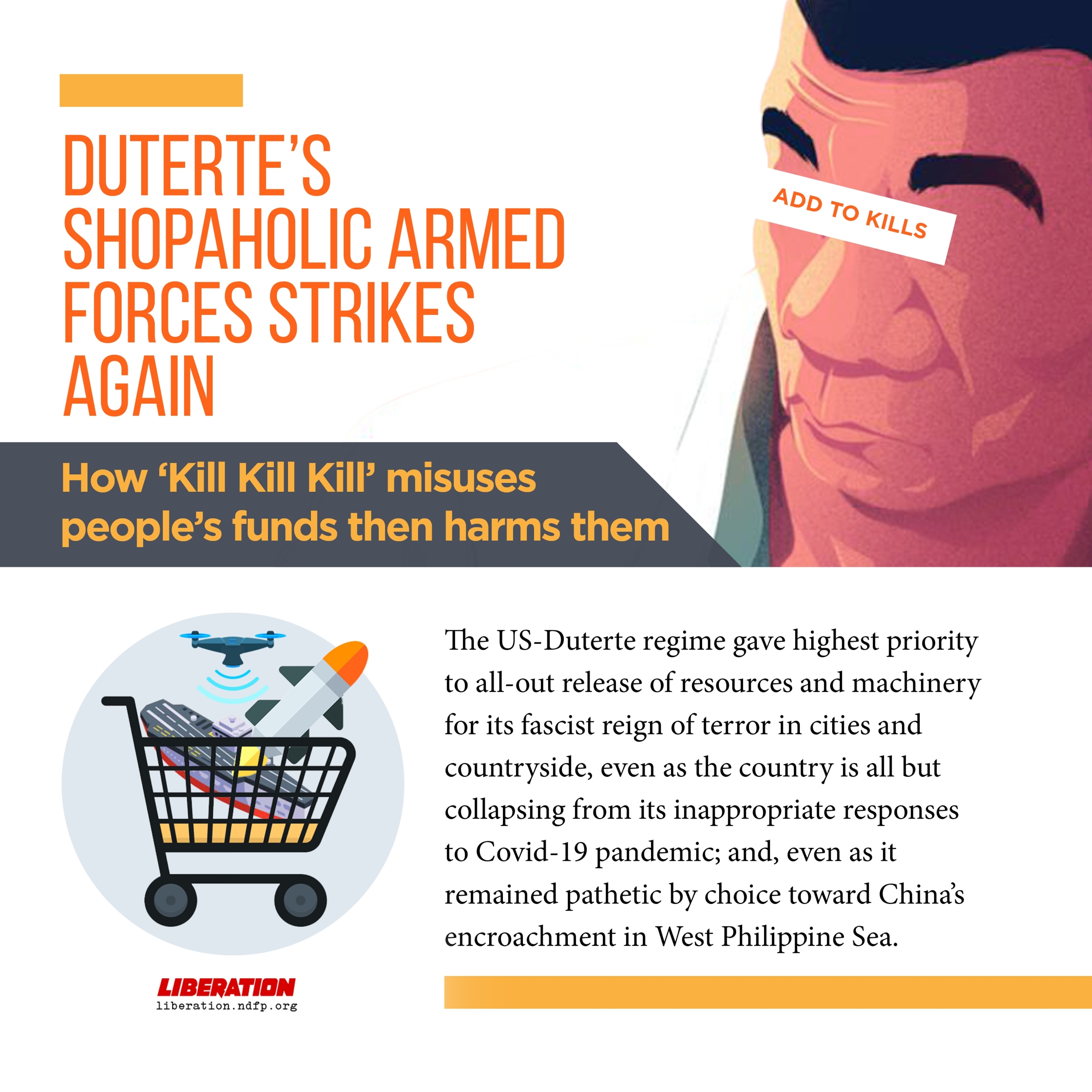


In a recent collated report, the Philippine Revolution Web Central traced a disturbing modus operandi of the Armed Forces of

“This is the Chinese Coast guard. This is under the jurisdiction of the Chinese government,” blared a Chinese officer who

by Pinky Ang The on again off again peace negotiations—scuttled by the Duterte regime—can still be saved if the people
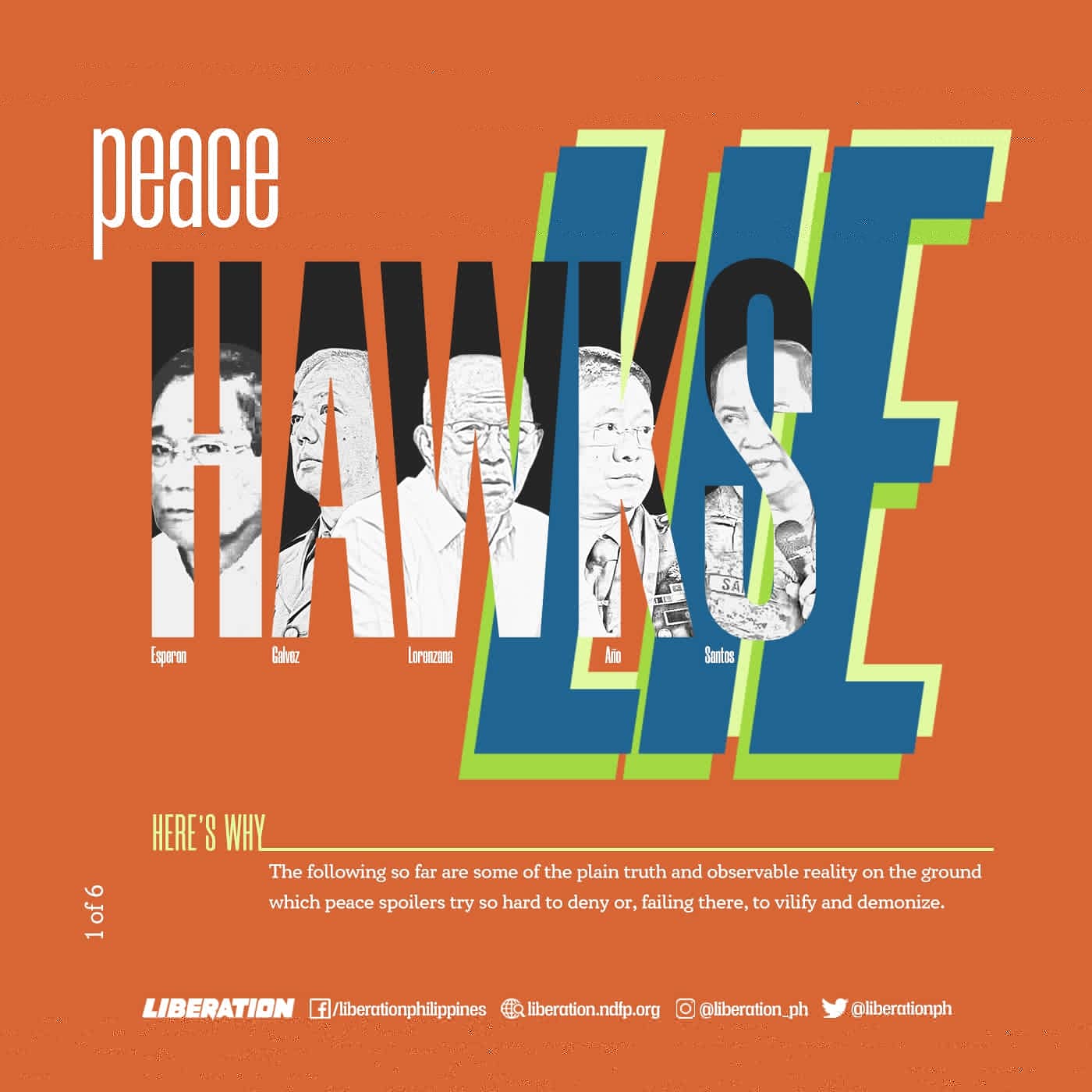
The on again off again peace negotiations—scuttled by the Duterte regime—can still be saved if the people correct and debunk all the misinformation being lobbed against it by the militarists, the peace spoilers, and hawkish officials of the Duterte regime.
The following so far are some of the plain truth and observable reality on the ground which peace spoilers try so hard to deny or, failing there, to vilify and demonize. Feel free to add.
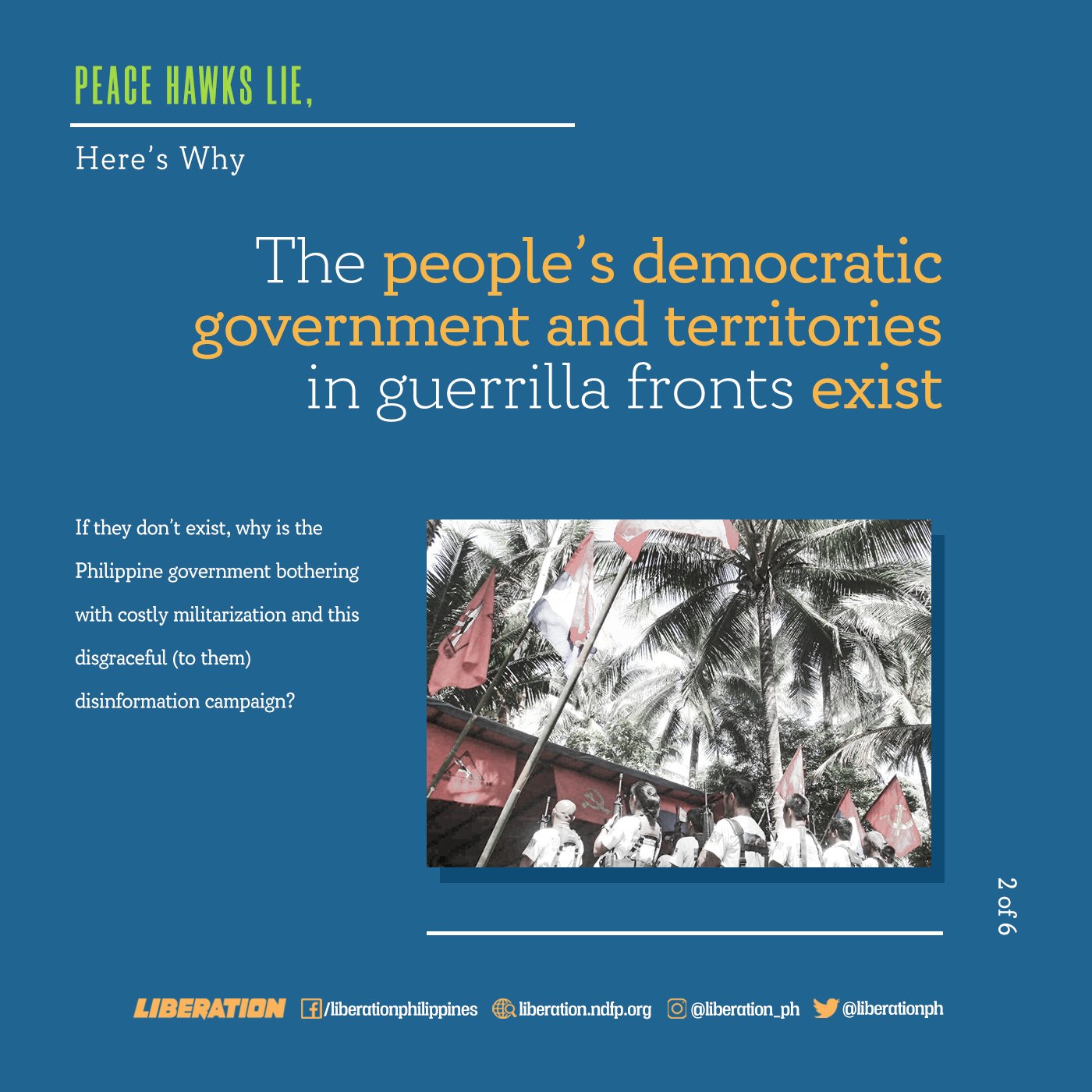
The guerrilla fronts have expanded to about a hundred amid the continuing intensified militarization topped by increased use of civilian bureaucracy for waging war against the people. The simplest response to government or militarist denial of the existence of the people’s democratic government is: if they don’t exist, why is the Philippine government bothering with costly militarization and this disgraceful (to them) disinformation campaign?
The people’s democratic government continues to advance land reform, revolutionary justice, defense of human and natural resources for national industrialization. The government of the Republic of the Philippines and its mercenary troops know and confirm this every time they present their faked or forced surrenderers (mostly civilian farmers or government soldier pretending to be a rebel); when they order local government to declare the Communist Party and the New People’s Army as persona non grata; or when they rail against revolutionary taxation or village militias flexing muscles to defend themselves.
The Duterte regime and the militarists precisely know the existence of guerrilla fronts and people’s democratic government as they vainly try to trap them in localized peace talks. They have long failed to appreciate that the rebels aren’t as corruptible as the AFP or PNP generals. Or that the revolutionary movement continues to expand despite or because of sufferings the military and the plunderers inflict on the people.
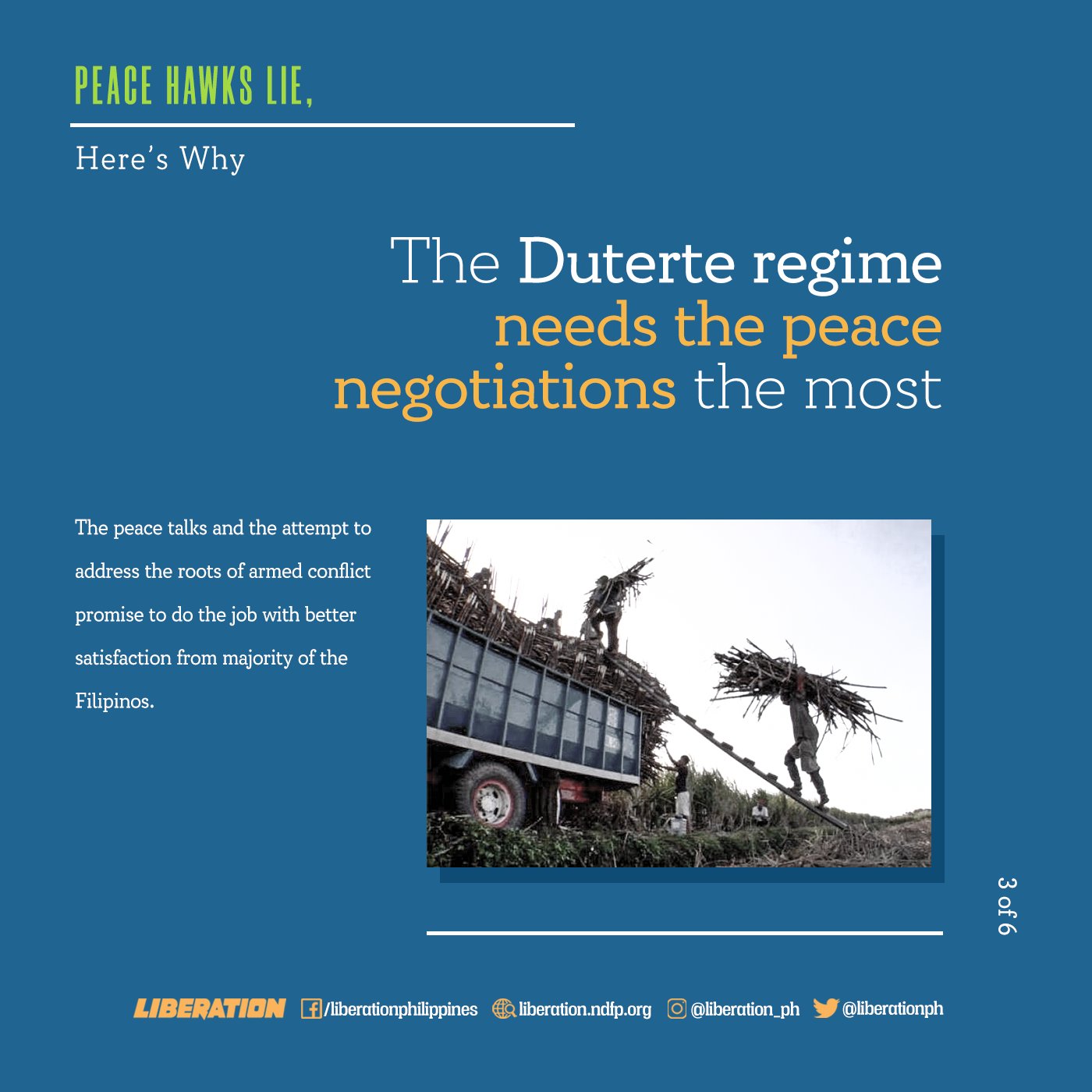
The Duterte regime is now weighed down by the sheer amount of blood shed because of his dirty wars against the poor. Meanwhile, no amount of magic in official statistics can hide that the economy is not as good as it projects, and that the majority of the Filipinos are worse off.
Now in his lameduck years in Malacañang, Duterte can’t fail to notice that even his highest military subordinates (Hermogenes Esperon, Jr., Delfin Lorenzana, Eduardo Año, Carlito Galvez, and Filemon Santos, Jr.) have so publicly opposed his intent to resume peace negotiations between the GRP and the NDFP. Instead of addressing the roots of the armed conflict to ready the ground for peace, these military subordinates want to continue their military rampage, as well as the drive to place the government and society under military rule through Executive Order No. 70.
Unfortunately for Duterte, he is the commander-in-chief to be tried for his accountability to war crimes, and his regime is what’s on the line for history’s reckoning. His military subordinates, meanwhile, have rampaged and butchered up till their retirement from the AFP. Yet they still failed to bring down the revolutionaries through the years, through failed deadlines, under different presidents.
It doesn’t need rocket science to grasp that the Philippine government cannot win the war by military solution alone. The peace talks and the attempt to address the roots of armed conflict promise to do the job with better satisfaction from majority of the Filipinos.
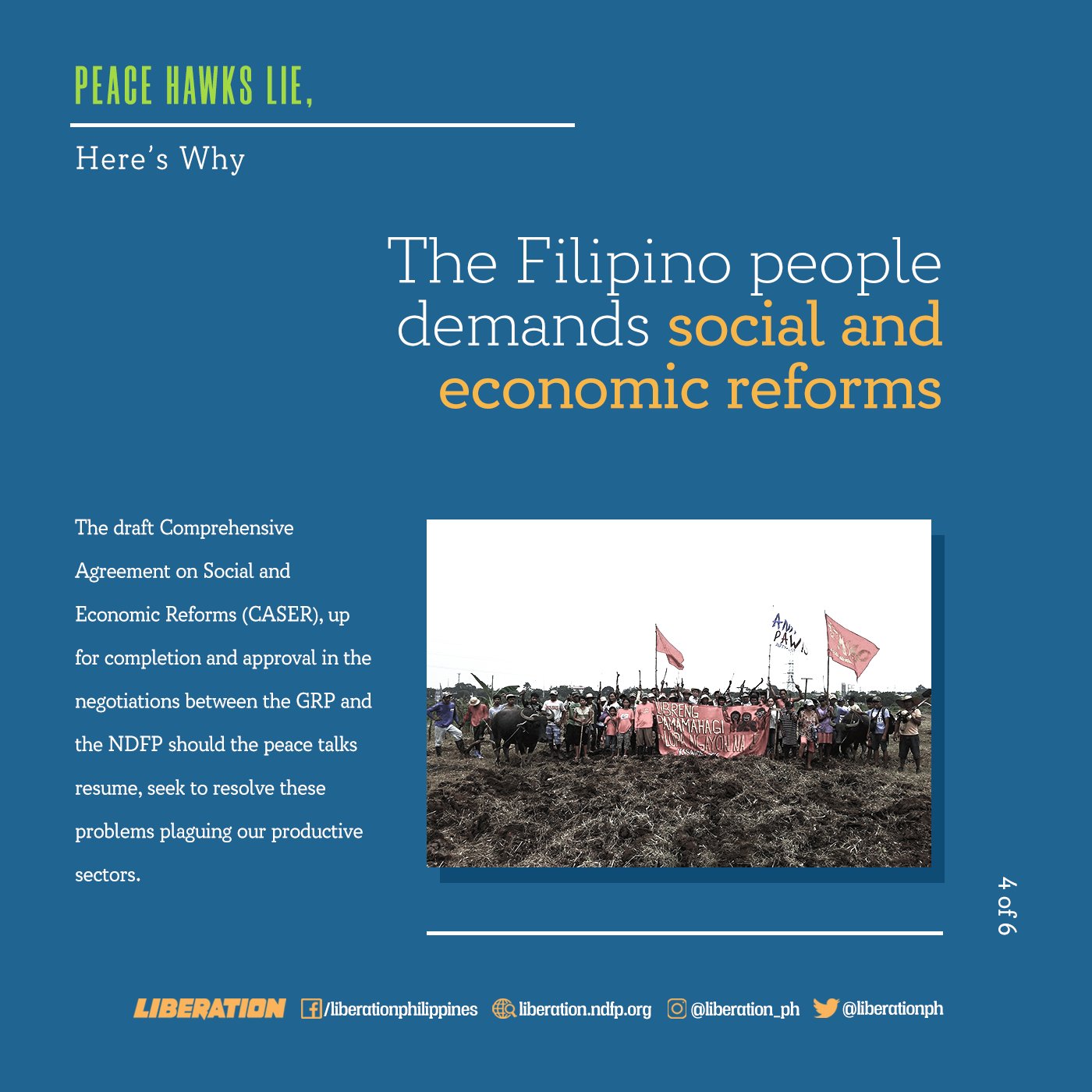
The way Duterte’s recycled generals and hawkish officials speak, you’d think the Filipinos live already in an industrial paradise, without social injustices, without worsening unemployment, low incomes and rampant poverty. Of course these exist only in their brags and baseless beliefs. The Philippine economy stands only propped up by a bloated unproductive services sector, overseas remittances, and debt. It begs for scraps from foreign investments who take away more from the country than what they bring in.
The country’s agriculture and industry have steadily declined no thanks to the past and present government’s neoliberal policies. The draft Comprehensive Agreement on Social and Economic Reforms (CASER), up for completion and approval in the negotiations between the GRP and the NDFP should the peace talks resume, seek to resolve these problems plaguing our productive sectors.
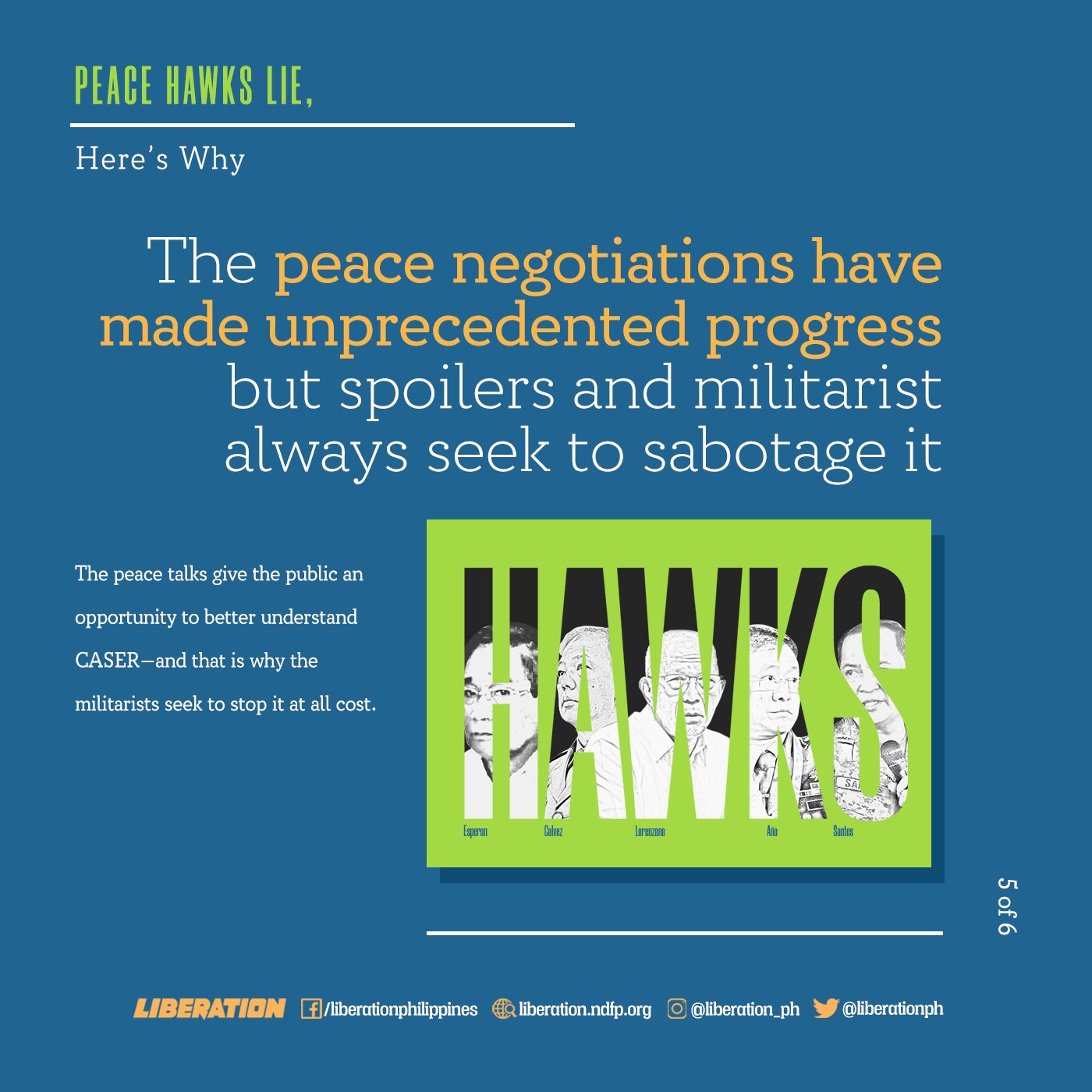
The peace talks that started in 2016 have progressed in fleshing out the CASER, the meat of the peace negotiations. It used to exist as two different drafts of the negotiating panels. Before talks were halted in 2018, the four formal rounds of peace talks abroad and seven meetings in the Philippines had produced a common outline and substantial drafts on two of the most important sections of CASER: Agrarian Reform and Rural Development (ARRD) and National Industrialization and Economic Development (NIED). These two alone can give vast benefits for tens of millions of Filipinos and the cause of national development.
The peace talks give the public an opportunity to better understand CASER—and that is why the militarists seek to stop it at all cost. They will be thoroughly exposed not only as peace saboteurs but as agents of enemies of the Filipino people.
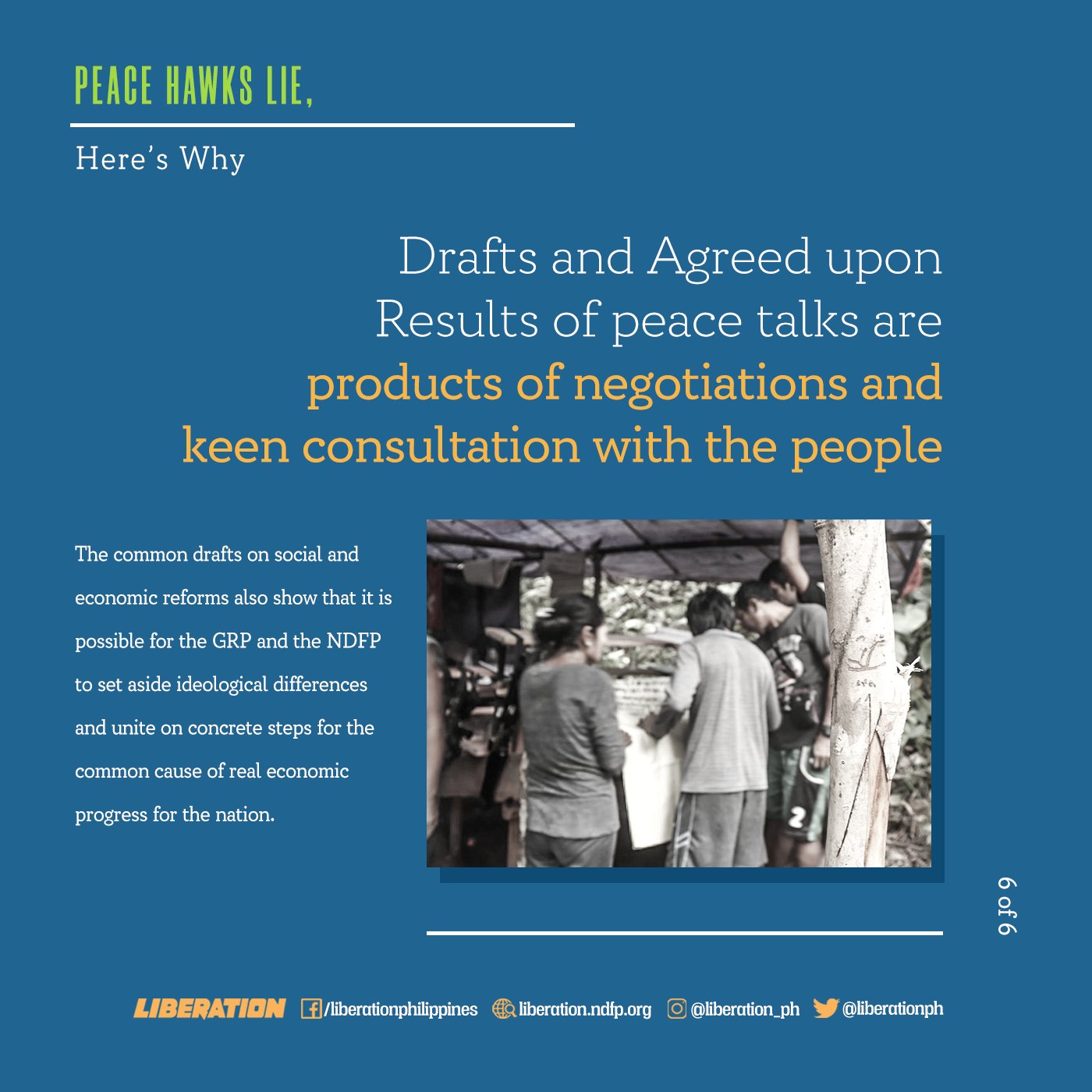
Whatever common drafts have been mutually agreed upon and prepared by the negotiating parties and their working groups, these were discussed and to be approved by the NDFP and GRP negotiating panels. These are no secret nor unilateral impositions—things the militarists have been known of hatching up. With regard to the NDFP proposals, these are reflection not only of the people’s desire but of the developments in the guerrilla zones. The drafts were widely disseminated and still being disseminated and discussed in guerrilla zones; and also being updated as the years go by.
The common drafts on social and economic reforms also show that it is possible for the GRP and the NDFP to set aside ideological differences and unite on concrete steps for the common cause of real economic progress for the nation.
With the people’s resolve to push for just and lasting peace, the militarists and peace spoilers, who have failed so spectacularly at bringing about peace, will not succeed at sabotaging again the peace negotiations. ###
#ResumeTalks
#SignCASER
#JustPeace
—–
VISIT and FOLLOW
Website: https://liberation.ndfp.info
Facebook: https://fb.com/liberationphilippines
Twitter: https://twitter.com/liberationph
Instagram: https://instagram.com/liberation_ph
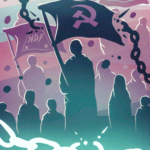
The CPP-NPA-NDFP is not one and the same organization. These are three distinct organizations, even as they have the same

Below is a sampler list indicative of what (or how much) the US-Duterte regime has so far achieved as an
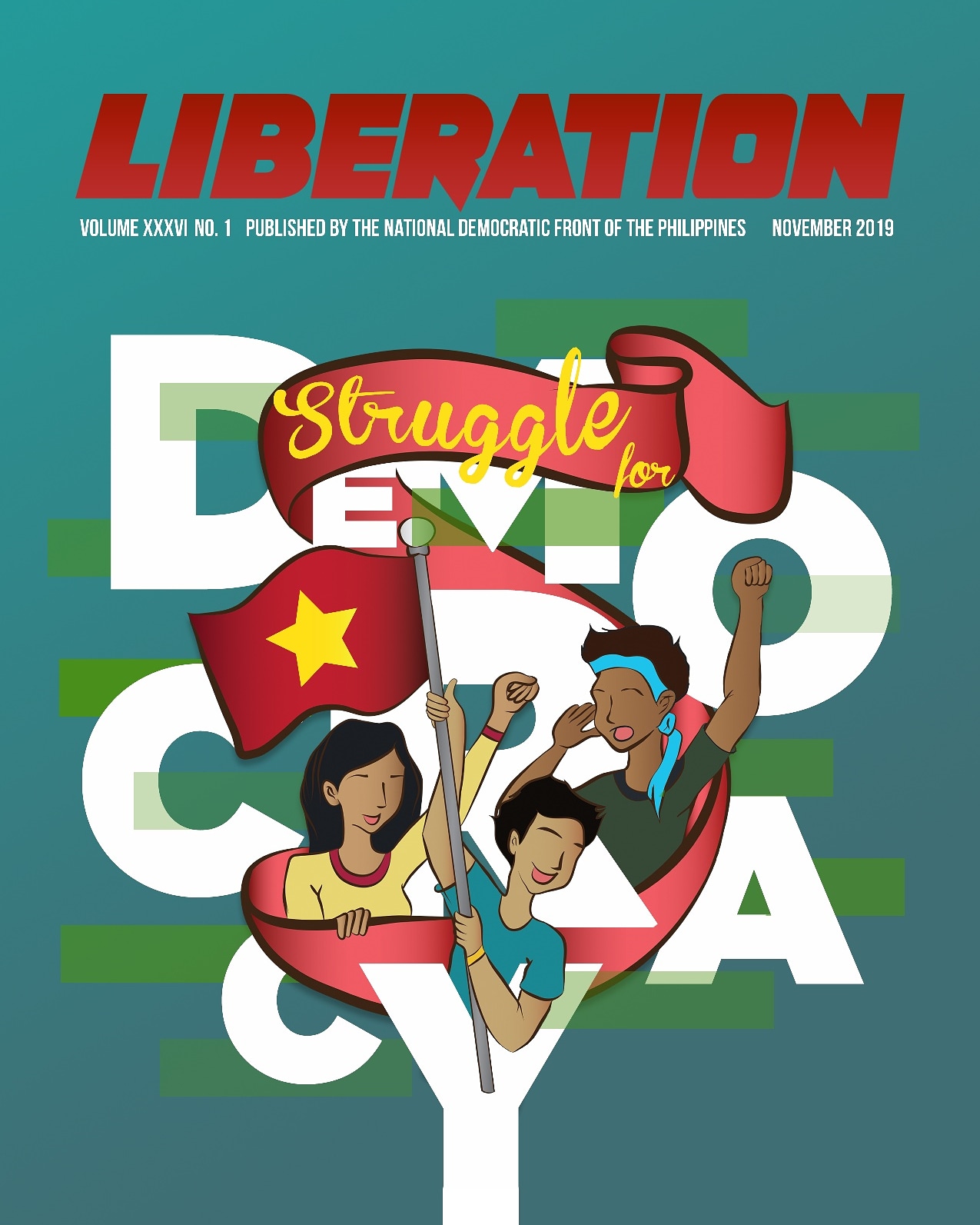
Since 1981, when the Marcos dictatorship initiated Operational Plan (Oplan) Katatagan purportedly “to defend the state” (the besieged fascist regime) from the fast-growing New People’s Army (NPA), each succeeding administration has followed suit. This is understandable, since the planner-implementor of every Oplan has been the same military establishment habituated to martial-rule repressive action.The Oplans have had varying names. Yet all have been aimed at deterring the growth of or strategically defeating the NPA, to preserve the existing rotten ruling system.These were: Corazon C. Aquino’s Oplan Mamamayan and Oplan Lambat-Bitag I and II; Fidel Ramos’ Lambat-Bitag III and IV, and Oplans Makabayan and Balangay (which transitted into Joseph Estrada’s truncated presidency); Gloria Arroyo’s Oplan Bantay Laya I and II; Benigno Aquino III’s Oplan Bayanihan; and Rodrigo Duterte’s Oplan Kapayapaan and Oplan Kapanatagan.While each succeeding administration adopted its predecessor’s operational concepts, it added new ones. But all such operational concepts were, invariably, copied from the counterinsurgency guide of the US Army. Although these may have worked for some time in America’s wars of aggression and intervention in different parts of the world, over the long run they have failed to achieve their prime objective: decisive military victory.Instead, these American wars—practically wars against the peoples of the countries they invaded, starting with the Philippines at the turn of the 20th century—have left behind countless deaths mostly of civilians, including children; pervasive human rights violations; displacements en masse of the population; and massive destruction of socio-economic resources requiring decades to recover.Similarly, albeit in smaller scale, these have been the dire impacts of the successive counterinsurgency Oplans on our people—since Marcos’ time to the present—in the undefined arenas of war across the archipelago, mostly in the countrysides and hinterlands.The current Oplan Kapanatagan started as Oplan Kapayapaan in January 2017. The latter was also dubbed as the AFP Development Support and Security Plan 2017-2022, which the Armed Forces off the Philippines (AFP) described as an advance from Aquino III’s Oplan Bayanihan. It adopted the latter’s “whole-of-nation” or “people-centered” approach. Oplan Bayanihan, the AFP bragged, resulted in getting 71 of the 76 (out of 86) provinces deemed to be “insurgency affected” declared as “insurgency free” and “peaceful and ready for further development.”The change to Kapanatagan stemmed from the AFP’s assessment that Oplan Kapayapaan was failing to achieve its targeted goal to defeat the NPA midway of Duterte’s six-year term of office.When first announced by AFP chief Gen. Benjamin Madrigal before the May 2019 midterm elections, it was billed as the AFP-PNP Joint Campaign Plan “Kapanatagan” 2018-2022. Madrigal described it as a “medium-term broad plan that shall guide the AFP and Philippine National Police (PNP) in providing guidelines and delineation of authority while performing their mandated tasks to promote peace, ensure security, and support the overall development initiatives of the government towards inclusive growth.” It is anchored, he added, on the national strategic guidance defined in the National Vision, National Security Policy, Philippine Development Plan, National Peace and Development Agenda, and the 2018 Department of National Defence (DND) Guidance and Policy Thrusts.“The respective strategic thrusts of the AFP and PNP were thus harmonized in this Joint Campaign Plan “Kapanatagan” 2018-2022,” Madrigal said. He called it “a dynamic process to establish greater inter-operability in our continuing operations to address security concerns within our respective areas of concern, including all other productive endeavors wherein we join hands in support of national government initiatives as envisioned by President Rodrigo R. Duterte.”Specifically, Madrigal cited two “salient features” of Campaign Plan Kapanatagan: 1) The PNP shall support the AFP in combat operations involving the suppression of insurgency and other serious threats to national security; and 2) The PNP shall take the lead role in law-enforcement operations against criminal syndicates and private armed groups, with the active support of the AFP.”It was in the Cordillera region where the AFP and PNP first “rolled out” Oplan Kapanatagan, after the May midterm elections. Northern Luzon Command (Nolcom) chief Lt. Gen. Emmanuel Salamat then said: “Because of the effort of the AFP and PNP in preventing violence and any actions of the local terrorist groups in the Cordillera region, we assure that the AFP and PNP will continue to work together through Joint Kapanatagan Cordillera.”He emphasized that the AFP-PNP would carry out “joint actions and plans to ensure a more collaborative effort to address the peace and security concerns, especially in those geographic isolated areas” (the guerrilla zones) in Cordillera. He expressed hope that the local government units and other “partner agencies” would collaborate to ensure implementation of Executive Order 70 and the National Task Force to End the Local Communist Armed Conflict (NTF-ELCAC) it created, headed by Duterte.Gen. Salamat disclosed that at a “national convergence” meeting in Malacañang, all those working under NTF-ELCAC had put all efforts “to come up with a cluster of responses” on the different issues, including “issues that have been exploited by the local terrorist groups” so that the government can respond to them.And how has the government responded through NTF-ELCAC and Oplan Kapanatagan?Recently, the Cordillera People’s Democratic Front (CPDF-National Democratic Front of the Philippines) issued a primer on this two-in-one counterinsurgency plan, titled “Disturbance and Plunder by the State Against the People.” Among others, it points out the following:R(egional)TF-ELCAC Cordillera was formed in July 2019, followed by P(rovincial)TF-ELCAC Mt. Province in September. In the last three months of the year municipal-and barangay-level TFs are targeted to be formed.In September, Nolcom launched military operations in various parts of the Cordillera and Ilocos regions, side-by-side with these joint campaigns by the AFP and PNP: disinfomation, surveillance, psychological war (disseminating false information that the NPA had planted land mines in the mountain areas of Bauko, Tadian, and Sagada towns in Mt. Province); forcible entry into civilian homes purportedly to “collect” firearms kept for the NPA in the communities of Besao town; threat and pressure used on residents summoned to pulong masa to sign up on a memorandum of agreement with the AFP-PNP and a declaration of the CPP-NPA as “persona non grata”; holding seminars and symposia on Duterte’s “war on drugs”; and delivery of “services”, “relief and rehabilitation”, among others.The AFP-PNP also set up detachments within three communities of Besao and one in Sagada, in violation of the Comprehensive Agreement on the Respect for Human Rights and International Humanitarian Law (CARHRIHL). (In the National Capital Region, through Implan/Oplan Kalasag, the NCR version of Oplan Katatagan, the AFP-PNP tandem has also set up detachments in some communities in Caloocan City. Uniformed armed teams engage in red-tagging, harassment, intimidation, while others offer “livelihood programs” to identified leaders and members of progressive organizations).CPDF also says the implementation of Oplan Katatagan and NTF-ELCAC in the region aims to facilitate the entry of energy and mining projects by foreign-local joint ventures that threaten the ecology, and violate the Cordillera people’s right to their ancestral lands. It named the following: Bimaka Renewable Energy Devt. Corp., Hydroelectric Dev’t Corp., Chico River Pump Irrigation Project by China’s CAMC Engineering, Aragorn Power Energy Corp., and Cordillera Exploration Co. Inc.-Nickel Asia of Japan.In sum, CPDF denounces the two-in-one campaign as designed to “pacify and press the people to obey the dictates of the reactionary state.” It calls on the Cordillera people to assert their rights, oppose the campaign through various means, and expose the true intent of the campaign: to crush the just struggle of the oppressed masses.It’s useful to note that, in 1981 the Marcos dictatorship already employed thru Oplan Katatagan the full force of the AFP, the police and paramilitary forces, its “development agencies”, and some civilian organizations. Duterte’s Oplan Kapanatagan and NTF-ELCAC—backed up by extended martial law in Mindanao and state of national emergency in other areas of the country—can be correctly described as an “Enhanced Oplan Katatagan.” Note further: the Oplan failed—in 1986 the people ousted Marcos.#FightTyranny
#StruggleForDemocracyDOWNLOAD LIBERATION NOVEMBER 2019 ISSUE:
https://drive.google.com/folderview?id=1-gzWR8-ZOqiK8RlJa0qS1klqWkgIEKUZ—–
VISIT and FOLLOW
Website: https://liberation.ndfp.info
Facebook: https://fb.com/liberationphilippines
Twitter: https://twitter.com/liberationph
Instagram: https://instagram.com/liberation_ph
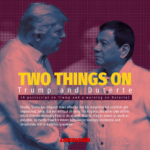
Finally, Trump has stepped down after he lost his reelection bid and then got impeached, twice. But not without showing
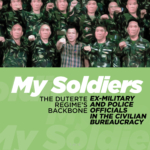
Here is an initial list of ex-military and police officials in the civilian bureaucracy—from the Cabinet to the major attached
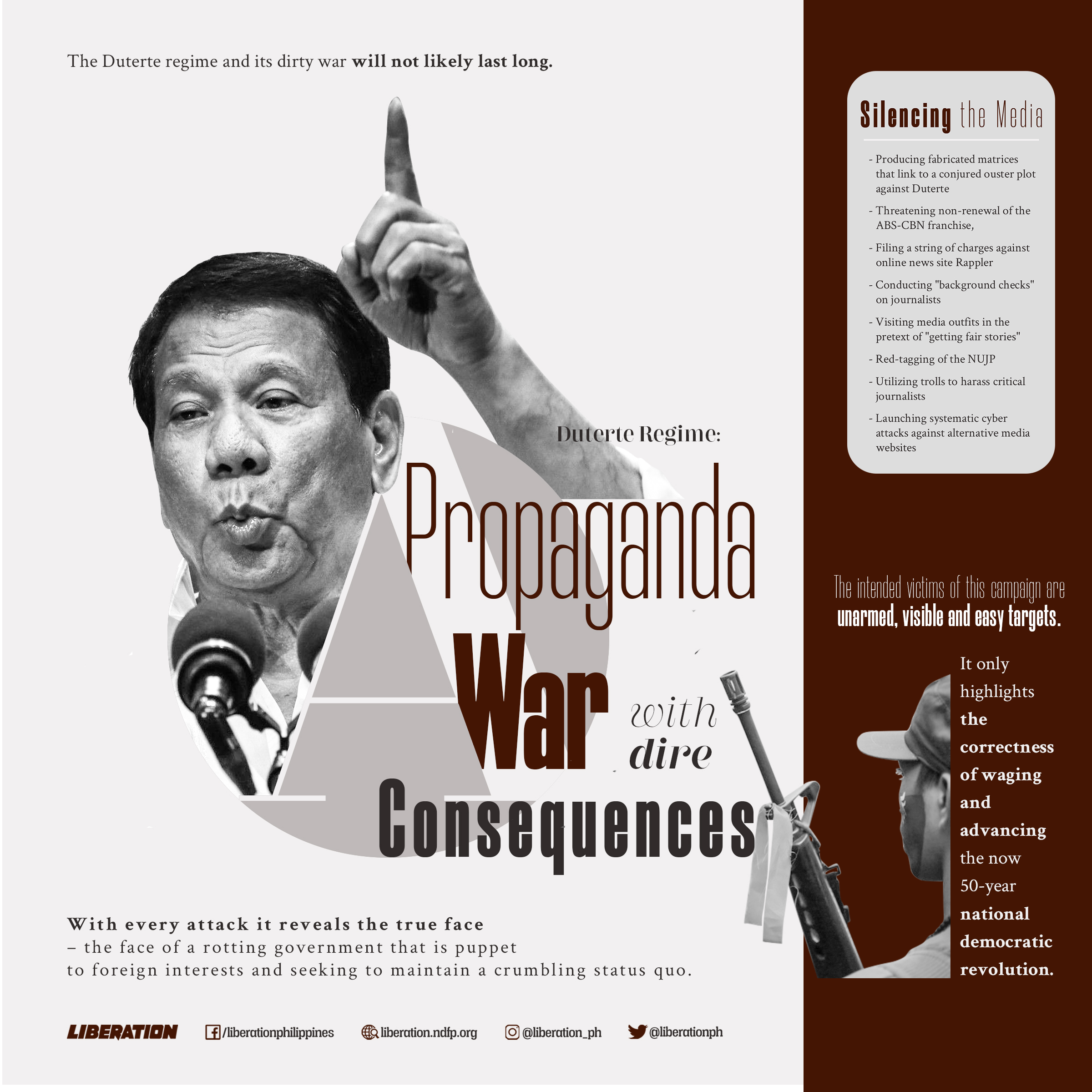
Neophyte Senator Ronaldo “Bato” dela Rosa, the controversial Philippine National Police chief of the Duterte government, recently led a public inquiry in the Senate and instantly spurred controversy and criticisms. He attempted to link progressive youth organizations with the Communist Party of the Philippines (CPP) and the New People’s Army (NPA).
He presented two witnesses who claimed they were “students by day and NPA by night”—a giveaway phrase as to where it came from: the military. That he sought to turn a public inquiry, purportedly in aid of legislation, into a witch hunt immediately became obvious.
The frontman in President Rodrigo Duterte’s “war on drugs” also presented parents of youth activists, who apparently had been goaded to vilify leaders of Anakbayan and Kabataan Partylist as “kidnappers who brainwash their members.” Bato’s witch hunt came with memes on social media showing NPA martyrs from the youth sector and victims of state-perpetrated enforced disappearances with a theme, “Sayang ang buhay ng kabataan (Youth lives just wasted).”
Military officers, who had been invited as resource persons, called for a review of an agreement between a youth leader and then defense minister Juan Ponce Enrile, prohibiting the presence of state security forces in the universities and colleges. They gave lame excuses, such as to prevent “front organizations” from recruiting students to join the NPA; avert the proliferation of drugs in schools; and give the military an equal opportunity to explain government programs.
Following the Senate inquiry, members of the PNP attempted to conduct “mandatory” drug testing on students at the Polytechnic University of the Philippines (PUP). Courageous PUP scholars who knew their rights valiantly resisted, driving away the cops from the university premises.
Bato couldn’t wait to use the Senate as platform for pushing the propaganda line against the CPP-NPA of the Duterte regime in its bid to defeat the revolutionary movement before the end of its term.
By striving to directly link the progressive youth organizations with the CPP-NPA and the armed struggle against the reactionary state, the fascist regime aims to justify its red-tagging, harassment, abductions, and killings of youth leaders and activists. The regime blurs—if not totally removes—the distinction between the armed revolutionary movement and the legal, above-ground democratic mass movement fighting for the people’s legitimate demands. It regards the open democratic mass movement as the propaganda component of the armed revolutionary movement.
Thus in the following weeks, the Duterte regime’s red-tagging spree, branding almost all legal organizations as “fronts” of the CPP-NPA, was raised a notch higher. Duterte’s rabid pro-US defense chief urged the illegalization of these organizations by reviving the Anti-Subversion Act of 1957 (the cold war-era legislation that illegalized the CPP; it was repealed under the Ramos government in 1992 as it entered into peace negotiations with the NDFP).
Red tagging and vilification of people’s organizations is a key facet of the “strategic communication” thrust under the “whole of nation approach (WNA)” of the Duterte regime’s counterinsurgency program. Under this overarching WNA concept—applied unsuccessfully by the US in its unending wars of intervention in Afghanistan and Iraq since 2001 and 2002—the regime seeks to “create a movement of and crusade against communist ideology starting with the youth.” It also aims to “assess and conduct counter measures on the current tri-media and social media being infiltrated and targeted by the “CNN [CPP-NPA-NDFP)” through inter-agency collaboration to counter and contain the spread of extremism and revolution.”
What the regime is trying to portray is a supposed state inter-agency collaboration with civil society collaboration against the Left revolutionary movement. While Bato exploits the Senate as platform, Congress is poised to enact repressive measures such as the revival of the Anti-Subversion Law, amendments to the Human Security Act of 2007 (the anti-terrorism law), mandatory military training in schools, among others. The Anti-Subversion Law and Human Security Act amendments portray critics and activists as “terrorists,” to justify unrelenting unarmed and armed attacks against them.
Red-tagging and vilification have preceded many cases of extrajudicial killing, torture, arrest and detention and other human rights abuses against farmers, workers, environmentalists, Church people, lawyers, human rights defenders and other sectors.
The Duterte regime’s propaganda machinery involves both the military and civilian bureaucracy, with the former taking the lead role. The composition of the National Task Force to End the Local Communist Armed Conflict (NTF-ELCAC), formed through Executive Order No. 70 and headed by President Duterte, shows how civilian agencies are being mobilized for counterinsurgency operations.
The NTF has been busy in its efforts to red tag and vilify the legal and progressive mass organizations critical of the Duterte regime and its continuing subservience to US imperialism and obeisance to China as the rising imperialist power.
One of the most glaring incidents of red-tagging happened during the May 2019 elections. PNP men and women in uniform were caught on camera in the act of distributing a PNP newsletter linking Makabayan Coalition-affiliated partylist groups to the underground revolutionary movement.
In other areas such as Panay, Negros, Davao, Cagayan de Oro, leaflets containing a list of persons alleged to be communists were distributed by state agents. In the list are human rights activists, lawyers, members of the religious, journalists, and academics.
Brig. Gen. Antonio Parlade, AFP deputy chief of staff for civil-military operations, is one of the most vociferous in publicly labeling human rights organizations and sectoral groups as “CPP-NPA fronts” and in peddling the lie that these organizations are involved in “terroristic” activities.
The regime also takes advantage of social media to vilify its the most vocal critics. The Philippine News Agency (PNA) and the Presidential Communications Operations Office (PCOO) makes use of fake photos, fake statements, and incredible claims against leaders of the people’s organizations.
The regime has spent tremendous amounts of taxpayers’ money in disseminating its propaganda against the progressive movement to the international community. The NTF-ELCAC went as far as dispatching a team that visited officials of European Union (EU) member states to red-tag Karapatan, Ibon International, Rural Missionaries of the Philippines, Gabriela, among others. The task force urged these EU countries to cut funding for organizations serving the most neglected rural communities in the Philippines.
The NTF-ELCAC sent a delegation to the United Nations Working Group on Involuntary Disappearances in Bosnia-Herzegovina and egregiously urged that body to delist 625 cases of enforced disappearances in the Philippines, mostly attributed to state security forces. NTF members also furiously lobbied against the passage of a resolution filed by Iceland in the UN Human Rights Council (UNHRC), urging the United Nations High Commissioner for Human Rights to look into the spate of extrajudicial killings and make a written comprehensive report on the human rights situation in the Philippines. Their lobbying failed; the UNHRC adopted the resolution.
Even the academe, hospitals and other civilian agencies are not spared from the witch hunt. Policemen did rounds in schools, government hospitals and other offices, profiling the members and officers of employees’ unions.
The AFP and PNP have been spreading outright lies. They claim to have succeeded in ending the “insurgency” in some provinces—claims that have repeatedly been belied since the Ramos government first declared, in 1994, that it had strategically defeated the NPA (which it admitted to be untrue several months later). They present to the media fake surrenderers, mostly farmers they either coerced, deceived, or bribed—through the Enhanced Comprehensive Local Integration Program (E-CLIP)—into admitting they were NPA members. They churn out these falsehoods to conjure the illusion that they are winning against the revolutionaries.
But when their most heinous crimes are exposed, they readily put the blame on the CPP- NPA. This has been shown in the case of the extrajudicial killings in Negros Oriental. Braving threats and the pain of repeatedly recalling the tragic massacres, families of the victims have testified how their loved ones were killed in cold blood during the joint AFP-PNP’s Oplan Sauron operations.
When members and other paid elements of the AFP and the PNP get killed in legitimate armed encounters, they try hide their defeats, or worse, misrepresent these incidents as violations by the NPA of international humanitarian law.
Through the Inter-Agency Committee on Legal Action (IACLA), the AFP and the PNP jointly try to use the judiciary as a weapon against critics of Duterte and his corrupt and bungling regime. The following are just some examples showing how this administration is criminalizing dissent: the perjury charges filed by Gen. Hermogenes Esperon, the president’s national security adviser, against Karapatan, the RMP, and Gabriela; the sedition and cyberlibel cases filed against Vice President Leni Robredo, political opposition candidates in the May senatorial elections, and some Catholic bishops; and, the kidnapping charges against youth leaders and former Bayan Muna Rep. Neri Colmenares.
A similar ridiculous and malicious kidnapping and child abuse charges were earlier filed against Bayan Muna President Satur Ocampo and Representative France Castro of Act-Teachers partylist in late 2018, when they helped rescue Lumad students who had been forced out of their school that was shut down by the military.
A number of activists, service providers of progressive NGOs and organizers or campaigners of legal progressive organizations, have also been arrested based on patently made-up accusations including illegal possession of firearms and explosives. In most cases the arresting teams have planted the “evidence” in the activists’ bags they seized, in vehicles or residences as in the case of labor organizer Maoj Maga, long-time peace advocate and NDFP peace consultant Rey Claro Casambre, and NDFP peace consultants Vicente Ladlad, Adel Silva, and recently Esterlita Suaybaguio.
Professional “witnesses” or “surrenderers” dragooned as witnesses are used from one case to another to churn out false testimonies, almost always bordering on the ridiculous. The use of arrest warrants against “John Doe” and “Jane Doe” have become the norm to justify the illegal arrests of any targeted person.
The “multiple murder” case involving, as supposedly prime evidence, “travelling skeletons”—first allegedly dug up from a mass grave in Baybay, Leyte then years later supposedly dugged up again in Inopacan, Leyte—has been discredited and should have been laid to rest long ago.
But, no! The biggest legal fiction of Gloria Arroyo’s Inter-Agency Legal Action Group (IALAG)—the filing of trumped-up murder charges in 2007 against Ocampo (then Bayan Muna congressman) and several others was questioned before the Supreme Court, which granted Ocampo bail. However, the case awaited action by the highest tribunal for seven years. Only in 2014 did the SC, mostly with new justices sitting, referred the case for trial to a regional trial court. Then after hearings held over about five years, the prosecutors recently asked the court to issue warrants of arrest against 38 of the co-accused, including NDFP chief political consultant Jose Maria Sison. The court issued the warrants.
In another case, the Court of Appeals recently junked both the petition for writ of amparo and writ of habeas data filed by the National Union of Peoples’ Lawyers (NUPL) and a similar petition filed by Karapatan, RMP and Gabriela (the NUPL is the groups’ legal counsel). The parallel rulings indicate the sway of military influence on the judiciary. The rulings, issued by different CA divisions, practically denied the human rights defenders the legal remedies sought for their protection against political persecution and threats to their personal security and their lives.
As part of its “strategic communication” strategy, the Duterte regime has been discrediting the journalism profession in an apparent bid to drown out the truth in media reporting and spread more lies. By calling journalists as bayaran, “press-titute”, and other derogatory labels, Duterte wants the Filipino people to doubt and reject the media’s role as watchdogs in society.
The escalation of cyber attacks and vilification of media outfits, critical think tanks, progressive service-oriented NGOs and people’s organizations are also part of the Duterte regime’s “strategic communication” plan. The AFP first announced its creation of a cyber workforce in 2017. Since then until 2019, the AFP, the PNP and the Philippine Coast Guard have yearly held a Cybersecurity Summit.
Early this year, the Duterte regime launched a national cybersecurity plan. It created a cybersecurity management system “to monitor cyber threats,” headed by the Integrated Computer Systems (ICS) and the Israeli surveillance company Verint, with an initial licensing period of three years. Verint is a billion-dollar company with a global interception and surveillance empires.
The Duterte regime’s dirty propaganda tactics are coupled with heightening repression.
Labeling activists interchangeably as “terrorists,” “suspected drug addicts,” “kidnappers,” and the like aims to demonize and criminalize dissent and justify their killing and other human rights violations against them.
All these latest misuse of new technology to spread lies, combined with the age-old armed repression, are like carpetbombs seeking to harm not only the armed revolutionaries. Mostly targeted are citizens critical of the regime, the activists, the Church, the media and any other supporter of human rights and the struggle for genuine democracy.
The intended victims of this campaign are unarmed, visible and easy targets. The Duterte regime is fighting a truly dirty war. But the more it lies and kills even non-combatants, the more it reveals the bankruptcy of any promised good inuring to the people that it trots out to justify this dirty and costly war.
As such, the Duterte regime and its dirty war will not likely last long. With every attack it reveals its true face, the face of a rotting government that is puppet to foreign interests and seeking to maintain a crumbling status quo. It only highlights the correctness of waging and advancing the now 50-year national democratic revolution.
To break the cycle of lies and killings being perpetrated by this fascist regime, the people here and abroad should harness the courage and will power to expose and denounce its lies, and call for ever-broadening people’s resistance.###
#DuterTerorista
#FightTyranny
#DefendPressFreedom
#MakibakaWagMatakot
—–
VISIT and FOLLOW
Website: https://liberation.ndfp.info
Facebook: https://fb.com/liberationphilippines
Twitter: https://twitter.com/liberationph
Instagram: https://instagram.com/liberation_ph

Pahayag ng mga kasaping organisasyon ng National Democratic Front of the Philippines (NDFP) sa okasyon ng ika-51 Anibersaryo ng pagkakatatag

In a recent collated report, the Philippine Revolution Web Central traced a disturbing modus operandi of the Armed Forces of

Here is a gathering of some unforgettable names. They are among our cherished crop of revolutionaries. They are our beloved
